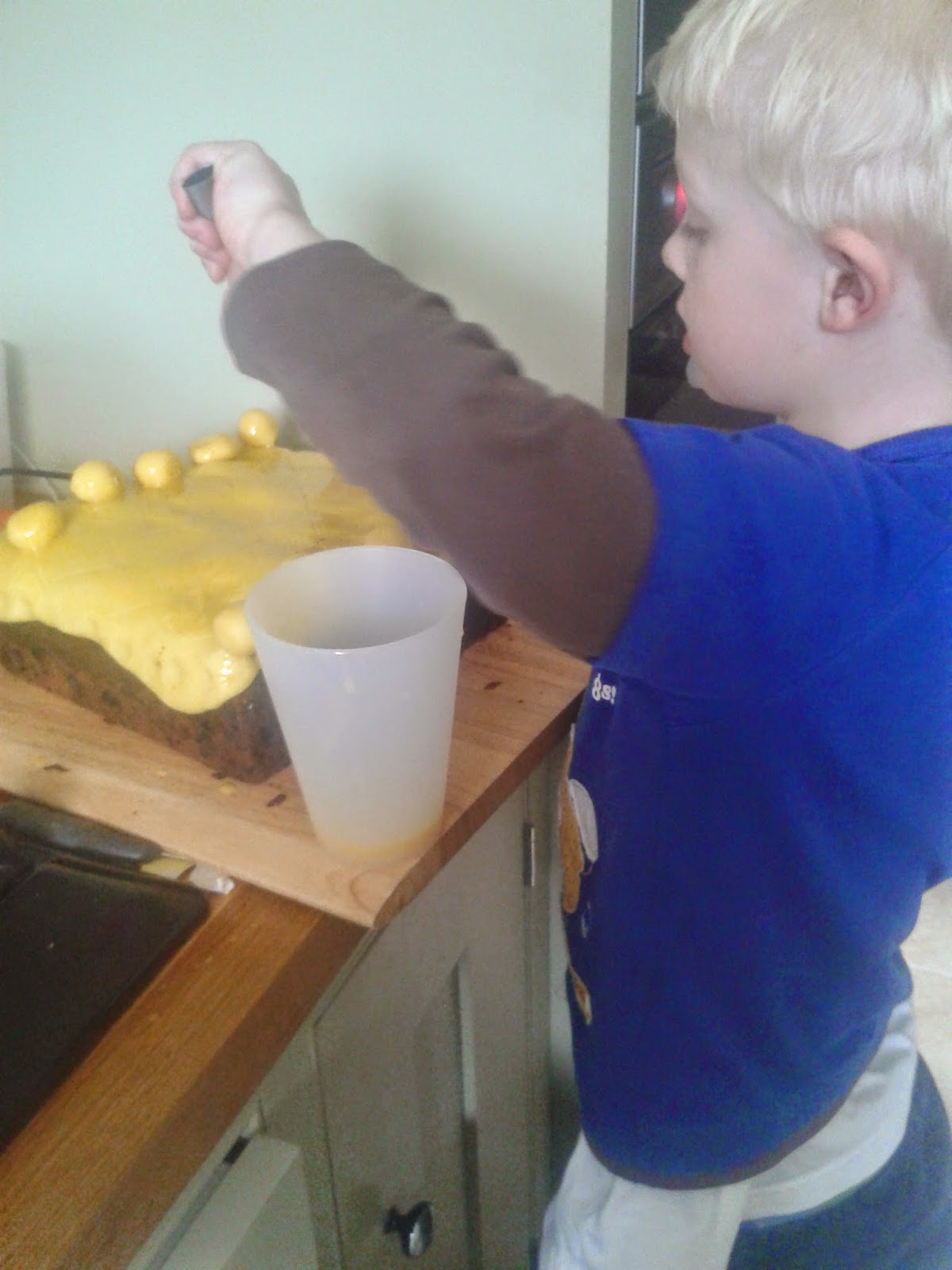Well, after all the sweet treats of Easter I thought it was time for a change, and dived into the bread making section of 'Bake'. Then for some reason, I decided to make Brioche - a sweet, enriched bread, Oops, my sweet tooth won again! Still, it was well worth it. For those who don't know, brioche is a dough with a high butter and egg content - it has a really light texture and golden colour.
You can buy moulds to shape brioche in the traditional way, like so...
Not my creation, I hasten to add!
As we've been trying to economise a bit, I decided not to buy the moulds, but use the tins I had. So I used 1 standard loaf tin, and 4 mini loaf tins. The latter I bought ages ago, as I thought they were cute (I'm a sucker for cute) and this was their first outing. I was pleased with all the results, both in taste and appearance. The mini loaves sliced perfectly into dinky little slices, which Megan devoured for breaskfast, spread with butter & jam. I think they'd look gorgeous arranged on a cake stand, as part of an afternoon tea.
Then I did manage a savoury - bacon and cheddar bread. This is a very easy, hearty loaf, which could be knocked up quickly for those occasions when you've run out of bread and just need something for lunch.
I enjoyed it with tomato soup yesterday, and grilled and buttered today.
Here's the recipe, if you'd like to have a go...
- 320g (11 1/2oz) plain flour
- 1 tbsp. baking powder
- 1/2 tsp salt
- 1/4 tsp freshly ground black pepper
- 100g ( 3 1/2ox) Cheddar cheese, grated
- 100g (3 1/2oz) bacon lardons, cooked until just crisp then cooled
- 200ml (7fl oz) milk
- 2 eggs
- 1 tbsp. wholegrain mustard (I used Dijon as that was all I had)
- 60ml (2 fl oz) olive oil
- Preheat oven to 180C/350F/GM4. Lightly oil and line the loaf tin with parchment paper.
- Sift all the dry ingredients into a large bowl. Add the grated cheese and lardons. Mix well,
- Pour the milk into a large measuring jug, add the eggs; mustard and olive oil, and whisk to combine.
- Make a well in the centre of the dry ingredients and slowly pour in the liquid, stirring all the time until it is fully incorporated, to form a fairly liquid dough.
- Pour the mixture into the prepared tin, and bake in the oven for 50 minutes. Remove from the tin, and cook for a further 10 minutes, directly on the oven shelf to crisp the bottom. When cooked, it will sound hollow when tapped on the bottom. Cook on a wire rack before eating.
Rachel also provides variations of pumpkin seed, Gruyere and thyme leaf bread; and sun-dried tomato, rosemary and olive bread. Will definitely try these at some point!
Over the last week, I've also made 'baked breakfast omelette' with bacon; cheese; mushrooms and herbs. Really good!
I've also tried Rachel's baked bananas. Now, it's not very often that a Rachel recipe lets me down, but I was disappointed with these. We often have baked bananas after a barbecue, left in their skins, wrapped in foil and cooked on the coals. Rachel's version are peeled and then baked in the oven. We found that the texture went a bit strange - almost potato like. I was looking forward to trying her accompaniment of 'orange, honey and mascarpone cream' but also found this a bit strange - more of a liquid than a cream, and the flavours didn't seem to combine very well. Oh well. you win some you lose some!
Going to attempt bagels next, back soon with the results!















.jpg)
.jpg)
